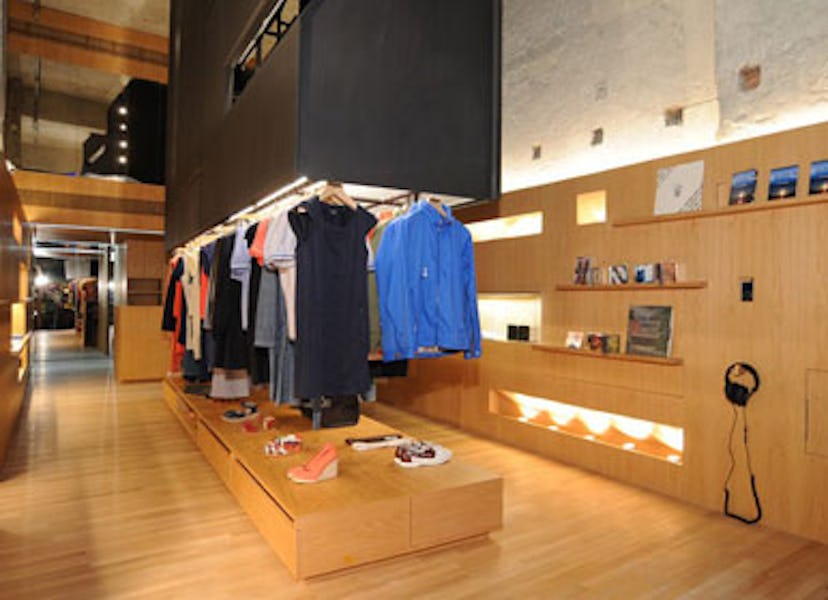A.P.C.’s architect on enthusiastic minimalism & the Coppolas
The very chic, very minimal, workwear-inspired clothing of A.P.C. continues its low-key global invasion. Last month the company, which has more than 30 boutiques worldwide, unveiled its third store in Hong Kong (above) and will...

How did you start working for A.P.C.? I met [company founder] Jean Touitou 10 years ago, when he was looking for someone to design A.P.C.’s recording studio. We worked together a year later, when Jean wanted to renovate the A.P.C. store on rue de Fleurus, which doesn’t exist anymore. That process created the foundation for our future collaborations.
You’ve also had commissions from Sofia Coppola and Francis Ford Coppola. How did those come about? Sofia filmed a scene in Lost in Translation at the A.P.C. store in Harajuku, and later saw a couple of my other projects when she was in Paris filming Marie Antoinette. So she asked me to design a vacation home—she wanted it to be entirely of wood—by the sea in Belize, which I finished in late 2008. It’s on the grounds of Turtle Inn, one of her father’s three resorts in Central America.
Above and below: Sofia Coppola’s house in Belize.
And that led to her father commissioning you? Yes, after that, he asked me to work on an extension of Blancaneaux Lodge, his other resort in Belize. That project is in development.
You’ve designed A.P.C. stores in Hong Kong, Berlin and L.A., among other cities. Are you going for a particular look with each one? People have described my work as “enthusiastic minimalism.” Some of the recurring themes—in line with A.P.C.’s own collections—are simplicity and the idea of accessible luxury. Most of all, the goal is to display the clothes clearly and simply. But none of the stores are based on a single model—that’s a deliberate choice.
You also work as a production designer on films, most recently Blame it on Fidel and The Ax. How do those experiences compare to your work as an architect? The first film I worked on was an independent with a tiny budget, and I had absolutely no experience as a production designer, so I had to learn about things like staging and lighting. Whatever the differences between architecture and filmmaking—the durability of a built structure versus the immaterial image—my interests in texture and composition link the two together.
Photos courtesy of Laurent Deroo.